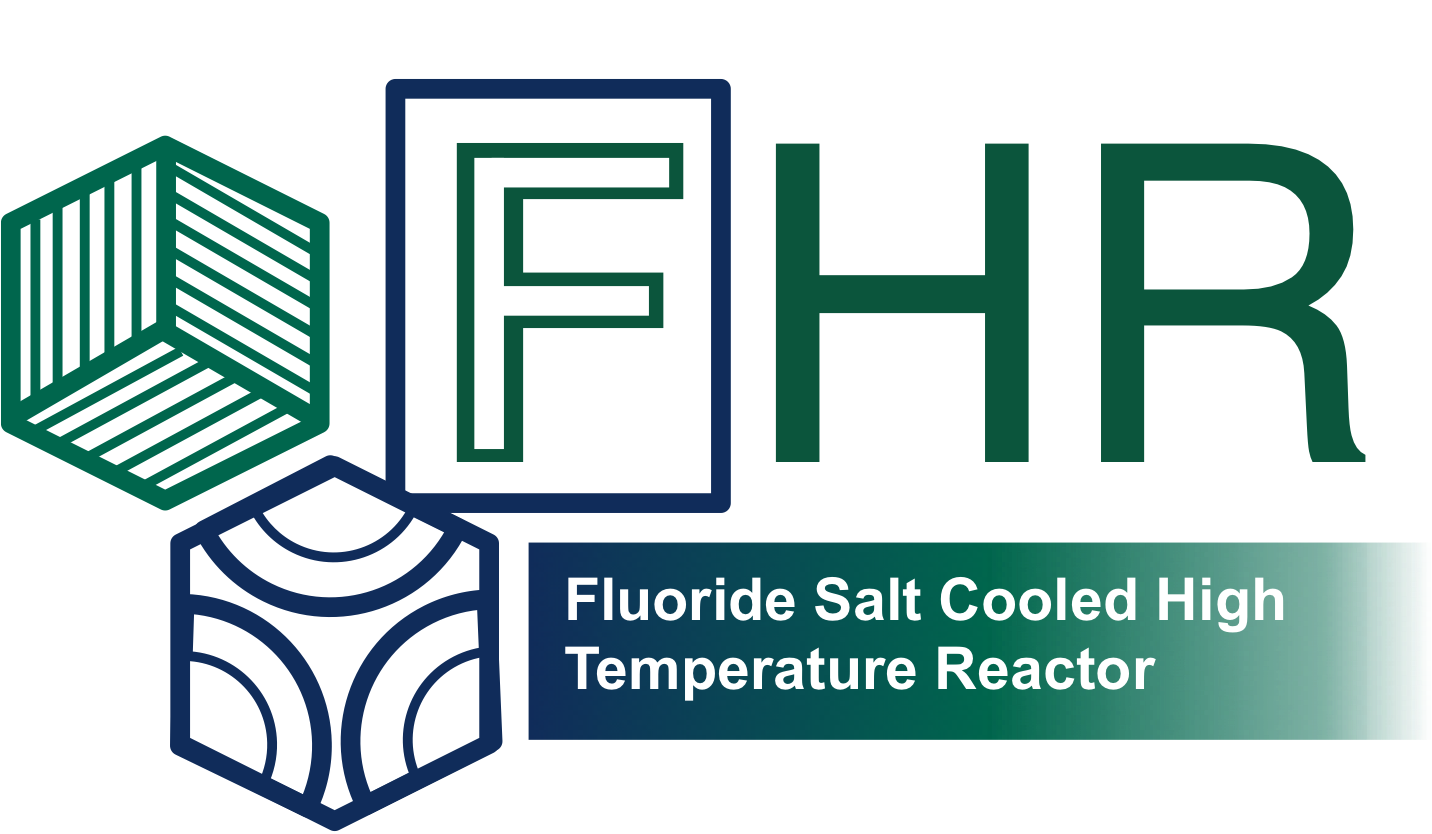Overview

The term “molten salt reactor” refers to nuclear reactors that use molten salts to transfer heat away from the reactor core. The heat can then be used either to produce electricity or for industrial processes. The use of molten salts to cool the reactor distinguishes molten salt reactors (MSRs) from the other reactor types which use liquid metal, gas, or water as coolants.
MSRs fall into two classes: salt-cooled reactors, in which the core contains a solid fuel and liquid salt coolant, and salt-fueled reactors, in which the fuel is dissolved within the salt. The term “fluoride salt-cooled high-temperature reactor” (FHR) was adopted in 2010 to distinguish fluoride salt-cooled MSRs from other MSRs.
Current ORNL concept MSRs use solid fuel, although ORNL has a long history working with salt-fueled MSRs.
MSR designs have several inherent safety advantages. The first, and possibly the most important, is that the reactor is operated at low pressure because the coolants never approach boiling point. Even in an accident, there would be no force expelling materials from the reactor, and no high-pressure containment system would be required to prevent such a release.
In addition, under accident conditions MSRs can rely on convection currents—otherwise known as natural circulation—to circulate the cooling salts. This passive safety feature relies on the fact that hot liquids naturally rise and cooler ones sink. Coolant will therefore continue to circulate through the reactor and remove excess heat indefinitely, even if power is lost to the reactor.
While there are no operating MSRs at present, interest in this promising technology can be found both within the US and internationally. Here are a few examples:
- ORNL has signed a Cooperative Research and Development Agreement (CRADA) with China’s Shanghai Institute of Applied Physics (SINAP) to study and develop advanced reactor technologies that use lithium-beryllium-fluoride salts for cooling. This collaboration will initially focus on SINAP’s Thorium Molten Salt Reactor—Solid Fuel 1 (TMSR-SF1).
- ORNL has developed two FHR-class MSR concepts: the 1,500 megawatt electric advanced high-temperature reactor (AHTR) and the 125 megawatt thermal small modular advanced high-temperature reactor (SmAHTR).
- ORNL has entered into an agreement with the Canadian company Terrestrial Energy Inc. (TEI) to perform a high-level design review of TEI’s Integral Molten Salt Reactor.
- In addition, US universities, including the Massachusetts Institute of Technology, the Georgia Institute of Technology, and the University of California–Berkeley, have begun to investigate alternate FHR design concepts programs for universities sponsored by the Department of Energy (DOE). On behalf of DOE, ORNL serves to advise and coordinate the research at these universities.
Contacts
David Holcomb, HolcombDE@ornl.gov, Salt Reactor Technical Lead
*Original online at https://www.ornl.gov/content/fluoride-salt-cooled-high-temperature-reactors
